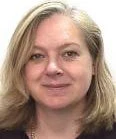
Anne Mutua is not your typical reality TV show contestant.
She is a poor, smallholder farmer living outside Nairobi, Kenya. She doesn’t care much about outsmarting competitors, but about how well her cow is doing. Still, Anne is famous in Kenya because she was visited by a TV production crew and two Kenyan celebrities who focused on how she should care for her zero-graze cow—a cow whose milk gives Anne both income and a source of good nutrition for her family.
Who thought to bring smallholder farmers, cows, and African television together? The answer is Shamba Shape Up ( shamba means farm in Swahili), a wildly popular reality “make-over” show helping Anne and others improve their agriculture practices, attracting almost 14 million viewers across Africa.
Each show features two hosts visiting a rural shamba, bringing lights, cameras, and technical experts to help farmers address problems such as why their chickens are not laying eggs, or why their cows are not producing sufficient milk.
Shamba Shape Up was one of three outstanding projects selected as winners of recent World Bank Harvesting Nutrition contest, a joint effort between the Bank’s SecureNutrition Knowledge Platform, the Global Alliance for Improved Nutrition (GAIN) and Save the Children UK.
While Shamba Shape Up took home the prize for Most Innovative Approach, there were additional prizes for Potential Impact on Nutrition ( Realigning Agriculture to Improve Nutrition, or RAIN ), and the Most Scalable Approach ( N2Africa). Last month, all three winners were highlighted at a global event at the Bank’s Washington office. (Videos embedded below)
Shamba Shape Up - #HarvestingNutrition Award for Innovation
RAIN - #HarvestingNutrition Award for Impact
N2Africa - #HarvestingNutrition Award for Scale
Through SecureNutrition, the World Bank and its partners take a multisectoral approach (across nutrition, agriculture and food security) to improving nutrition in vulnerable populations. The project is currently embarking on a phase-two expansion, incorporating social protection, water/sanitation, and other underlying drivers of malnutrition into its work. You can sign up for a monthly multisectoral newsletter here.
The story of Anne and her cows is only one of many that cross boundaries of innovation, agriculture, nutrition, and poverty reduction. We hope that her example will spark other ideas to tackle development challenges at their root.
The Harvesting Nutrition contest was carried out with partners Global Alliance for Improved Nutrition (GAIN) and Save the Children UK.
Follow the World Bank Health team on Twitter: @WBG_Health
Related
SecureNutrition



Join the Conversation